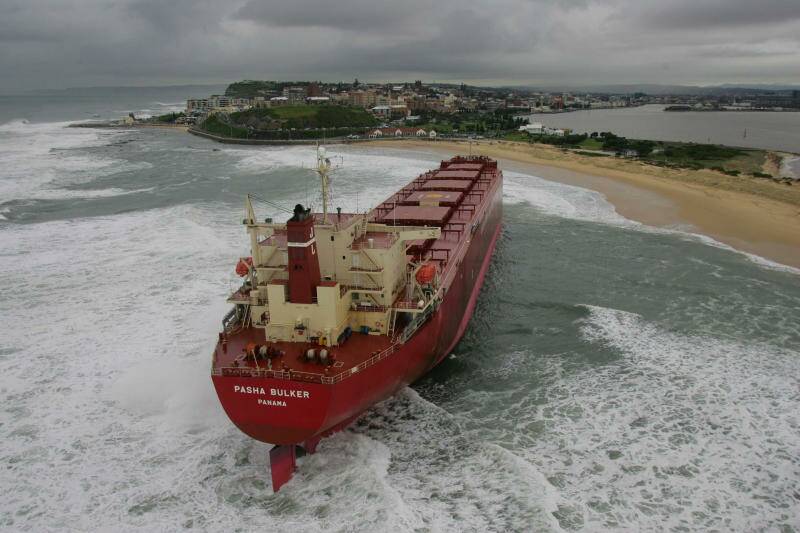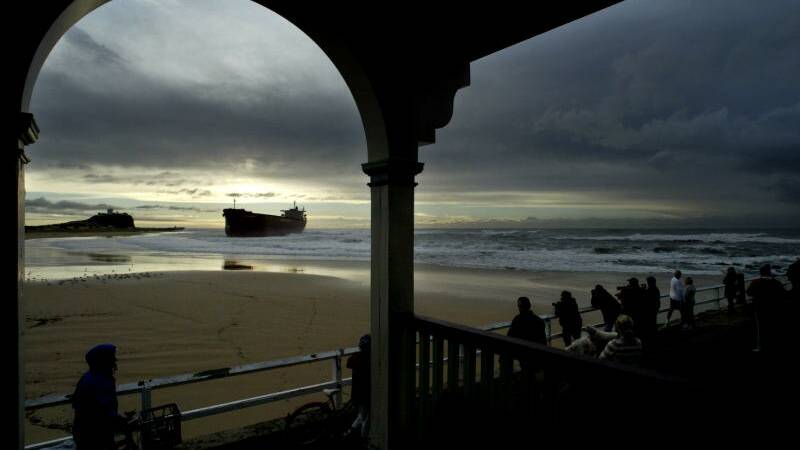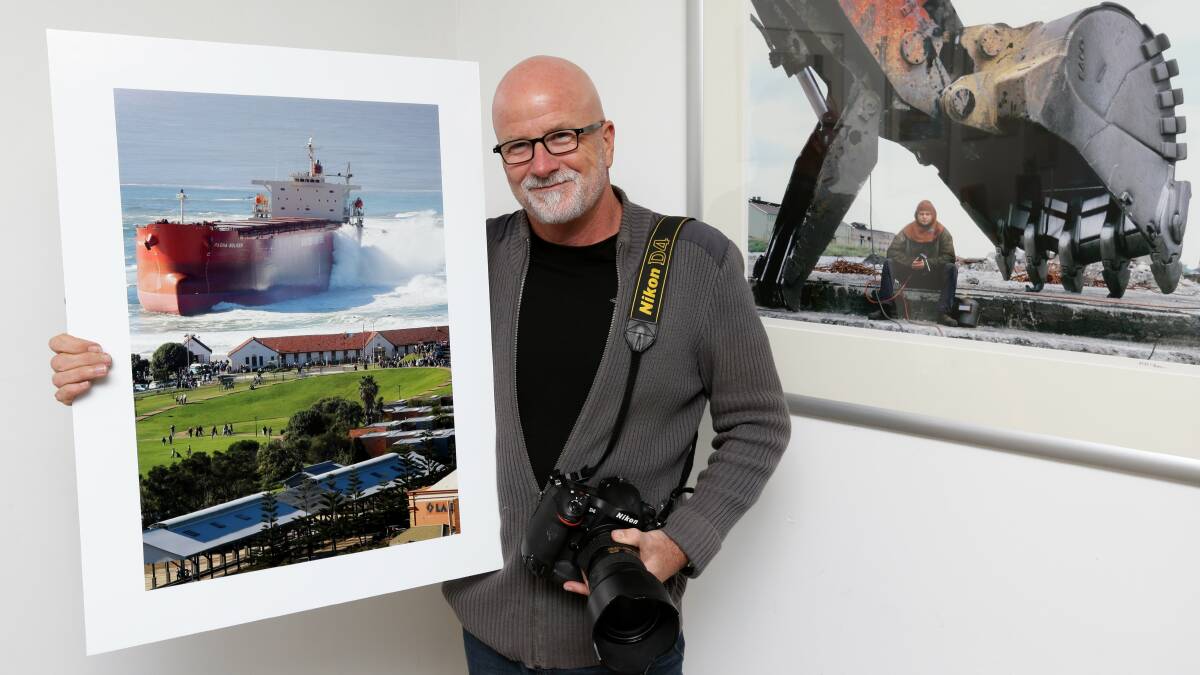
REMEMBERING JUNE 8, 2007: AS A murky dawn creeps in and Newcastle wakes to a filthy Friday morning, Mother Nature turns her fury on to a 40,000-tonne Panamanian-registered carrier.
The Pasha Bulker - once a 225-metre-long symbol of man's power over the oceans - is now a defenceless cork in a vast bathtub, floundering off a brutal coastline and just minutes from stubbornly entering Hunter folklore.
Veteran newsman Greg Wendt first hears of this ghost of the darkness from some old salts at Merewether Surf Club as he cowers in the winds waiting for his morning coffee.
They tell Wendt the big red ship had earlier found itself just off the famous surf break, battling the gales and 10-metre swells as its captain tried valiantly to get the propeller of the unladen carrier, already very high in the water, to gain some traction and send her back out to the relative safety of open water.
Wendt heads into work at the Newcastle Herald to find phones ringing off the hook. Word of the Pasha's fight headed up the coast quicker than the swells could push her.
With photographer David Wicks, Wendt speeds passed the old Royal Newcastle Hospital and down Shortland Esplanade to be greeted by a sight so vivid it has burnt in his memory.
Stories from the storm
- Part One: The ship hits the sand
- Part Two: The heartbreaking losses
- Part Three: Twist and out
-
Part Four: The heroes
-
Part Five: The lessons learnt
- We can never forget
- Your stories of the Pasha storm
"There is this 40,000-tonne bulk carrier just floundering almost. Battered by big waves and looking like it was perilously close to the baths. And in trouble,'' Wendt recalls.
"The captain of the ship was trying to reverse it and then jerk the bow into the teeth of the storm, so he was reversing down towards Nobbys.
"There is a great shot that [former Herald photographer Darren Pateman] got of the Pasha Bulker being hit by a wave and was bent almost over the rocks at the Cowrie Hole.
"I thought that's where it is going to end up. But it kept going in reverse towards Nobbys at a rate of knots.
"This wave just swamped it and all you could see was a bit of the funnel and a little bit of the bow and then it disappeared in the murk towards Nobbys.''

Wendt and Edwards quickly become part of a growing crowd of onlookers caught in the awesome moment.
Wendt remembers: "It was unbelievable, and it was more unbelievable that it was happening in front of everyone who were just standing there with hands on their mouths.''
But to Edwards, a veteran of decades of police work with a passion of Nobbys Beach and its iconic status, these were worrying moments.
He watches, hoping against hope it does not run aground between the Cowrie Hole and Nobbys Beach "because we could have still been picking it off the rock shelf''.
In all the "bad positions", the Pasha lands "in the best of those bad positions''.
But even through the howling gales strong enough to hurl people across the slippery pavement, the noises from the Pasha emanate.
Wendt says you could hear the moans of buckling steel and concerns move to whether, like the infamous Sygna which crashed into Stockton Beach 33 years previous, the big girl would break up.

The cavalry quickly arrive - Edwards helping to set up a command post for emergency services as authorities work out how to get the 22 Filipino seamen off.
Two Westpac rescue helicopters hover overhead and the rescue operation begins with crewman Glen Ramplin beginning the first of seemingly endless descents onto the deck to start carrying the seamen to safety.
"[Helicopter crew chief] Graham Nickisson said every time [Ramplin] went down the rope and touched the ship he got a massive electric shock because the blades had set up its own static electricity,'' Wendt says.
"But he went about 18 times out there and brought them in. They had to get them in, check them out, debrief them, customs and everything was there. It was a giant quarantine station.
"The chopper was into the wind and the pilot must have been flying blind with the weather.
"[The ship] was still pitching, even though it was stuck fast, it was still moving every time the waves hit it. Terrible conditions.''
After 90 minutes, the extraordinary rescue - which continues to be lauded as one of the great maritime operations - is complete.
No one is injured. Everyone is safe.
If theres a lasting legacy of the Pasha Bulker, its that it led to the creation of a new coal ship queuing system, where instead of the 57 ships that were anchored close into the coast back in 2007, waiting vessels now drift far out to sea, either east of Newcastle or up near New Guinea, as they wait their turn to load. And the Pasha Bulker repaired and refitted after the grounding and now known as the Drake.







